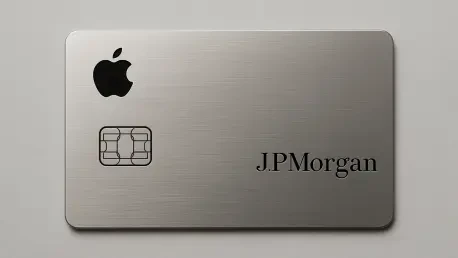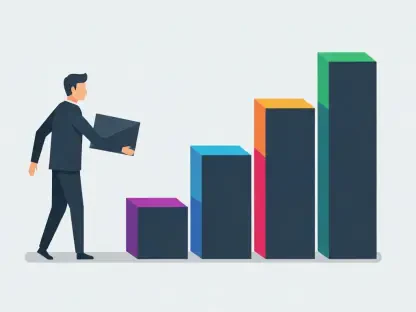I’m thrilled to sit down with Priya Jaiswal, a renowned authority in banking, business, and finance, whose expertise in market analysis, portfolio management, and international business trends offers invaluable insights into the evolving landscape of financial services. Today, we’re diving into the buzz surrounding JPMorgan Chase’s potential move to take over Apple’s credit card business, exploring what this could mean for the banking giant, the tech titan, and the industry at large. Our conversation touches on the strategic motivations behind such a deal, the value of customer data, and the broader implications for digital payment systems and partnerships.
Can you walk us through the latest developments regarding JPMorgan Chase’s interest in taking over Apple’s credit card business?
From what’s been reported, JPMorgan Chase is in advanced discussions to become the new partner for Apple’s credit card portfolio, potentially displacing Goldman Sachs, who currently manages it. While no deal has been finalized, the talks seem to be gaining momentum. This move signals a significant shift in the financial services space, as it involves not just a portfolio transfer but a deeper strategic play by one of the largest banks in the U.S. to align with a tech giant like Apple.
What do you believe is driving JPMorgan’s interest in this particular portfolio?
It’s not just about the immediate financial gain from the credit card business, which generates about $50 million annually—a drop in the bucket compared to JPMorgan’s nearly $178 billion in yearly revenue. I think the real draw is the strategic positioning. Gaining access to Apple’s customer base and the $20 billion in card balances currently held by Goldman Sachs offers a foothold into a lucrative demographic and potential cross-selling opportunities for other banking products.
Speaking of that demographic, why does access to data on Apple Card users hold so much value for a bank like JPMorgan?
Apple’s 12 million card users represent a well-defined and often affluent demographic—tech-savvy, brand-loyal, and likely to have disposable income. For JPMorgan, this data is a goldmine. It’s not just about knowing who these customers are but understanding their spending habits and preferences. This insight allows the bank to tailor offerings like loans, wealth management services, or premium accounts specifically to this group, potentially increasing customer lifetime value far beyond the card revenue itself.
How does the profile of a typical Apple user make them such an attractive target for financial institutions?
The typical Apple user tends to be younger, urban, and financially active, often valuing convenience and innovation in their financial products. They’re likely to adopt digital banking solutions quickly and engage with premium services if pitched correctly. For a bank, this translates to a customer base that’s not only profitable but also receptive to new offerings, whether it’s a high-yield savings account or investment tools, making them a prime audience for expanding market share.
There’s also speculation that JPMorgan might be eyeing other parts of Apple’s ecosystem, like Apple Pay. Why would access to a digital wallet platform be a game-changer for a bank?
Digital wallets like Apple Pay are at the forefront of how consumers interact with money today, with an estimated 65 million users in the U.S. alone and over 600 million globally. For a bank, being integrated into such a platform means direct access to transaction flows and consumer behavior at the point of sale. It’s a way to embed their services into everyday financial activities, potentially increasing card usage and strengthening customer loyalty through seamless payment experiences.
How do you see this potential deal affecting Goldman Sachs, the current partner for Apple’s credit card business?
Losing this portfolio would be a notable setback for Goldman Sachs, both financially and strategically. The $20 billion in balances isn’t just a number—it’s tied to a high-value customer segment they’ve invested in servicing. Strategically, it’s a blow to their consumer banking ambitions, as this partnership was a key part of their push into retail finance. They might need to pivot quickly to replace this business with other partnerships or products to maintain momentum.
Looking at the bigger picture, what’s your forecast for the future of partnerships between major banks and tech companies like this one?
I believe we’re just at the beginning of a deeper convergence between banking and technology. As consumer behavior shifts toward digital-first solutions, banks will increasingly seek partnerships with tech giants to access their ecosystems and customer bases. These alliances will likely extend beyond credit cards to areas like embedded finance, data-sharing agreements, and even co-branded fintech innovations. The challenge will be balancing competitive interests with regulatory scrutiny, but the potential for growth and innovation makes these collaborations inevitable and exciting to watch.









